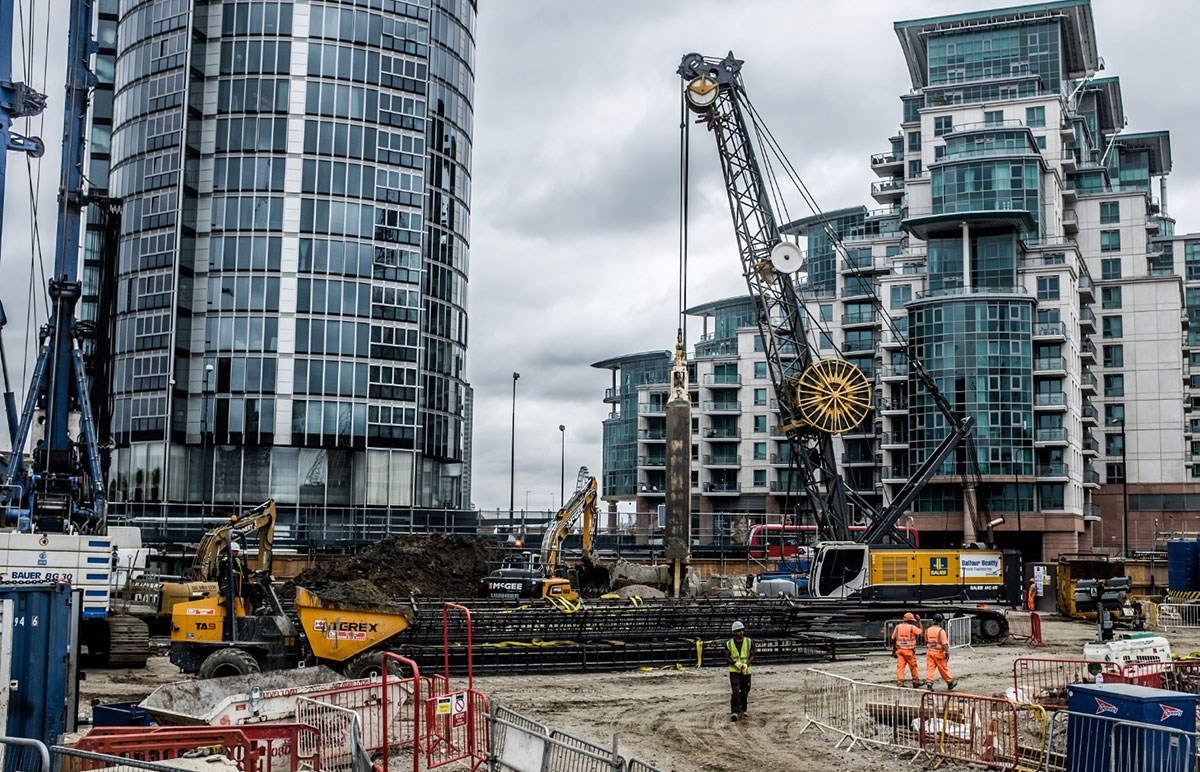Some Known Questions About Geotheta.
The 9-Second Trick For Geotheta
Table of ContentsThe Ultimate Guide To GeothetaThe 3-Minute Rule for GeothetaThe Best Strategy To Use For GeothetaNot known Details About Geotheta
They work together with civil designers, architectural designers, designers, and various other experts to incorporate geotechnical factors to consider right into the general job design and building procedure. This needs effective synergy, sychronisation, and communication to make sure that the geotechnical aspects straighten with the task goals and fulfill regulative requirements.Mining & Materials Engineering: Concepts of drilling, infiltration rates, and variables impacting the choice of drilling technique. Features of dynamites, shooting systems and blast patterns. Blasting techniques in surface and underground workings. Unique blasting strategies at excavation boundaries. Resonance and sound control. Mechanical and constant methods to fragmentation, consisting of longwall shearing and fullface boring.
Integrated evaluation of fragmentation and comminution operations. Provided by: Mining & Products Design.
All About Geotheta
Bachelor's level programs in civil, geotechnical, geological, and ecological engineering typically last 4 years and include general education programs in English, social science, and the liberal arts, in addition to training courses in innovative maths, structural geology, and fluid mineralogy. (https://www.edocr.com/v/p4pabymp/ianhammond2191/geotheta)
Geotechnical engineering includes the evaluation of the soil and rock conditions at a specific website, and their ramifications for the growth of that site. As the majority of frameworks depend on the ground for assistance, it is without shock that a detailed understanding of the ground conditions, and the viability of foundation systems, are vital to the lasting security and performance of the structure or structure.
Specialising in the examination of geological developments and ground behaviour, geotechnical engineers perform clinical examinations and screening to understand the impact these geological formations may have on the style and building of building, civil and infrastructure tasks. This proficiency is vital for the style and construction of structures, roadways, passages, dams, bridges, and supply of water and sewage systems.
The geotechnical group at Douglas Allies routinely talk to engineers, design engineers, designers, and contractors to make recommendations on style and development proposals to make certain that the constructed frameworks are appropriately created for the ground conditions. The style of footing systems needs to take into consideration the weight of the structure, the ability of the ground to sustain that weight with each other with activity resistances and efficient building and construction.
9 Simple Techniques For Geotheta
This task is greatly simplified by the usage of our Douglas Map geospatial system which makes this info readily accessible in a simple to make use of web internet browser user interface. A geotechnical engineer will route the boring of boreholes and examination pits to collect soil and various other examples, and likewise assess surface attributes and ground exposures to form a geotechnical model of the subsurface conditions.
Depending on the project kind and ground conditions experienced, lab screening may amongst various other see this points examine stamina, compressibility, reactivity and/or permeability of dirt and rock samples. Hereafter information is collected and collated, the outcomes are utilized for a geotechnical design of the site, which is typically provided as areas throughout the site.

A geotechnical investigation by nature can just assess the ground conditions at the areas pierced or excavated. All-natural variations in dirt and rock conditions can occur across a site and in between test places. It is therefore good practice that the geotechnical designer be retained throughout building and construction of the project to supply on-site verification that the ground problems encountered follow the expectations and suggestions given in the geotechnical investigation report.
Geotheta - The Facts
Geotechnical engineers use their in-depth understanding of dirt and rock to examine risk and fix problems on diverse framework projectsGeotechnical design is a specialist branch of civil design which checks out the practices of earth materials and the application of dirt and rock mechanics. Tailings Engineer. As a geotechnical designer, you will certainly evaluate the physical, mechanical and chemical homes of dirt and rock in order to develop foundations, maintaining frameworks and earthworks
Geotechnical design is very closely connected to and overlaps with, both engineering geology and ground design - https://www.huntingnet.com/forum/members/geotheta.html. It's feasible to specialise in geotechnics or help a geotechnical business however be called a design geologist or a ground engineer. As a geotechnical engineer, you'll need to: build and keep relationships with clients and other experts entailed in the website, throughout each projectmaintain safety and security standards on site be mindful of price effects when you make recommendationsstudy geological maps and aerial pictures from a range of sources and from various time periodsexamine building plans to see exactly how possible they are based on your understanding of the siteinvestigate threats or geological threats for the sitesearch for ecologically delicate features, such as garbage dump start to develop accurate and interpretive ground modelsplan field investigationsdrill and analyse examples of bedrock, soil, groundwater and additional products oversee various other experts on sitesolve technical issues as they occur, such as unexpected frameworks at drill sitesmonitor conditions during and after building to make certain structures are steady in the short and lengthy termadding information accumulated on website to your preliminary researchcreating geotechnical computations, drawings, and two or three-dimensional computer versions translating the datamaking suggestions concerning the suggested use the website
